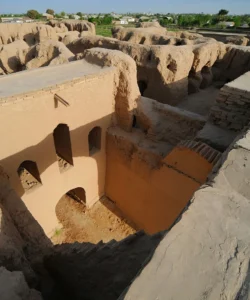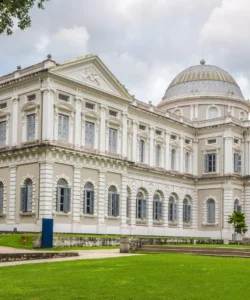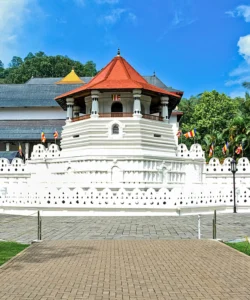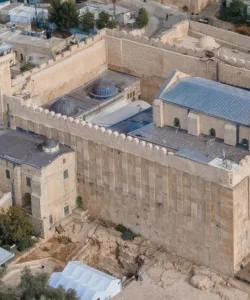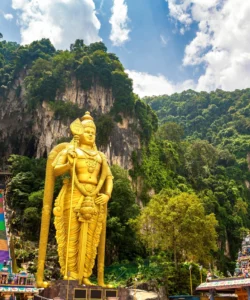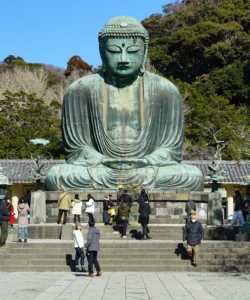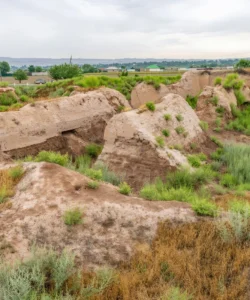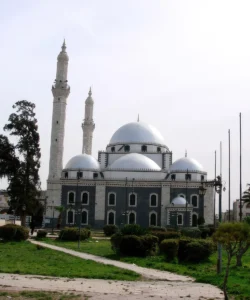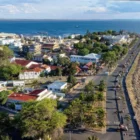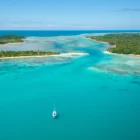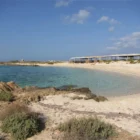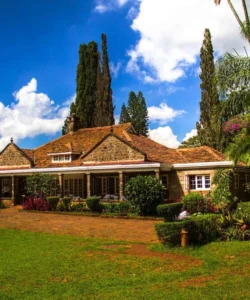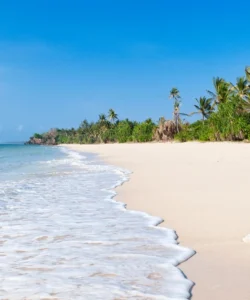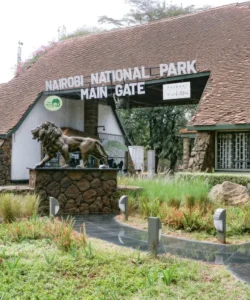Trakai Island Castle (Trakų salos pilis) is an enchanting medieval castle located on an island in Lake Galvė, near the town of Trakai, Lithuania. This stunning red-brick Gothic masterpiece is often described as a “fairytale castle” due to its picturesque setting and meticulously restored appearance. Built in the 14th and 15th centuries by Lithuanian Grand Dukes, it served as a major defensive stronghold, a royal residence, and a political center for the Grand Duchy of Lithuania. Today, it stands as a cherished national monument, a vibrant museum, and one of Lithuania’s most iconic and visited attractions.
Listen to an introduction about Trakai Island Castle

Name: Trakai Island Castle (Trakų salos pilis)
Address: Pilies g. 4, Trakai 21105, Lithuania. It is located on an island in Lake Galvė.
How to get there:
Trakai Island Castle is a popular and easy day trip from Vilnius:
- From Vilnius to Trakai:
- By Bus: Buses depart frequently (every 20 minutes to 3 hours, depending on the operator) from Vilnius Bus Station (Sodų g. 22) to Trakai. The journey takes approximately 30-40 minutes. From Trakai bus station, it’s about a 20-25 minute walk to the castle, or a short taxi/tuk-tuk ride.
- By Train: Trains leave from Vilnius Railway Station to Trakai. The journey takes around 30 minutes. From Trakai train station, it’s about a 25-minute walk or a short taxi/tuk-tuk ride to the castle.
- By Car/Taxi/Ride-hailing (e.g., Bolt/Uber): Driving to Trakai takes around 30-40 minutes (approx. 28-30 km west of Vilnius). There’s ample parking near the castle.
- By Guided Tour: Many tours offer round-trip transportation from Vilnius, often including an audio guide or a live guide, providing a stress-free and informative visit.
- From the Mainland to the Island Castle:
- The castle is reached by walking across two picturesque wooden footbridges that connect the mainland to the island. During winter, when Lake Galvė freezes solid, visitors can sometimes walk directly across the ice to the castle, a unique experience.
Best Time to Visit:
Trakai Island Castle is beautiful year-round, but the best times for comfortable exploration and vibrant activities are:
- Late Spring (May to early June): Pleasant temperatures, lush greenery, and fewer crowds than peak summer.
- Summer (Mid-June to August): Warmest weather, ideal for boat tours on the lake, outdoor events, and walking. This is peak season, so expect crowds.
- Early Autumn (September to early October): Crisp air, beautiful fall foliage around the lake, and still pleasant temperatures.
- Winter (December to February): A magical, fairytale-like atmosphere when the lake is frozen and the castle is covered in snow. Offers ice skating and ice walking on the lake. Be prepared for very cold temperatures.
Landscape and Architecture:
Trakai Island Castle is a stunning example of Gothic architecture, uniquely integrated with its natural lake environment:
- Island Location: The castle’s most striking feature is its location on one of the numerous islands (there are over 30 in Lake Galvė) in the pristine Lake Galvė. This water setting provided excellent natural defense and contributes significantly to its picturesque charm.
- Gothic Architecture: The castle is primarily built in the Gothic style, characterized by its robust red-brick and stone construction, pointed arches, vaulted ceilings, and defensive towers. Some Romanesque features are also present.
- Red Brick Construction: The extensive use of red Gothic bricks gives the castle a warm, distinctive color that contrasts beautifully with the blue waters of the lake and the green surrounding landscape.
- Outer and Inner Castles: The complex consists of an Outer Castle (forecourt) with impressive defensive walls, observation towers, and a main gatehouse, and an Inner Castle (Ducal Palace) with its own keep and a central courtyard.
- High Keep: The main palace building within the inner castle features a tall keep (main tower), once used for defensive purposes and as a residence.
- Moat within the Castle: The inner castle is separated from the outer defensive walls by an artificial moat, further enhancing its defensive capabilities.
- Vaulted Rooms and Corridors: The interior features a network of vaulted rooms, stone corridors, and galleries, some of which are now part of the museum’s exhibitions.
- Lakeside Scenery: Lake Galvė itself is a deep, clear lake, part of the Trakai Historical National Park, which covers a vast area with over 30 lakes. The surrounding landscape is a mix of natural and man-made beauty, including other smaller castles (like the Peninsula Castle ruins) and traditional wooden houses.
- Karaites Houses: The town of Trakai, on the mainland approaching the castle, is famous for its unique wooden Karaite houses. These distinctive homes, often with three windows facing the street, belong to the Karaite ethnic minority (Turkic-speaking Jews), who were brought to Trakai by Grand Duke Vytautas in the 14th century.
What makes it famous:
Trakai Island Castle is famous for:
- Only Island Castle in Eastern Europe: Its unique and strategically brilliant location on an island in a lake makes it an exceptional example of a medieval water castle, unparalleled in Eastern Europe.
- Fairytale Appearance: Its picturesque setting, red-brick walls, and turrets often give it a fairytale-like quality, making it a popular subject for photography and a beloved tourist destination.
- Historical Significance: It was a crucial stronghold and political center of the Grand Duchy of Lithuania, playing a significant role in Lithuanian history, including serving as a residence for Grand Dukes (most notably Vytautas the Great, who died here). It was never taken by an enemy in battle.
- Meticulous Reconstruction: After centuries of decline and dilapidation, the castle underwent extensive restoration and reconstruction, particularly after World War II, bringing it back to its 15th-century appearance.
- Trakai History Museum: The castle houses the Trakai History Museum, which features extensive exhibitions on Lithuanian history, archaeological findings, medieval weapons, armor, and collections of applied art, including displays on the unique Karaite culture.
- Cultural Hub: It serves as a venue for various cultural events, medieval festivals, concerts, and exhibitions, especially during the summer.
- Activities on Lake Galvė: The lake surrounding the castle offers numerous activities like boat tours, kayaking, paddle boating, and even ice skating in winter, allowing visitors to appreciate the castle from different perspectives.
- Karaite Culture: The presence of the unique Karaite ethnic minority and their distinct cultural heritage in Trakai adds an interesting layer to the town’s identity.
Differences from some other wonders:
Trakai Island Castle distinguishes itself from other famous castles and historical sites in several key ways:
- Island Location (Eastern Europe’s Only): Its most significant difference is its status as the only island castle of its kind in Eastern Europe. While other castles are built on islands (e.g., Mont Saint-Michel, though it’s tidal), Trakai is specifically within a lake system, providing a unique defensive advantage and picturesque setting distinct from coastal or riverine island castles.
- Red Brick Gothic Style in Water Setting: The combination of its distinctive red-brick Gothic architecture and its water-bound setting creates a visual identity that sets it apart from more stone-built European castles or those located on hilltops or dry land.
- Reconstruction for Preservation: While many castles are preserved as ruins, Trakai Island Castle’s current grandeur is largely due to extensive and careful reconstruction efforts in the 20th century based on historical plans, allowing visitors to experience it close to its original form. This contrasts with sites that remain as ruins (e.g., some parts of Hue Imperial City) or those with more continuous existence.
- Unique Cultural Minorities (Karaites): The castle’s history is intertwined with the unique Karaite community in Trakai, offering a cultural element (their houses, museum exhibits, cuisine) that is not typically found alongside other medieval castles.
- Interactive Winter Experience: The ability to walk or even ice skate across the frozen lake to the castle in winter offers a highly unique and immersive seasonal experience that very few other major castles can provide.
- Less Imposing Royal Residence: While a grand ducal residence, it has a more intimate and less overwhelmingly opulent feel than some of the larger, more ornate royal palaces of Western Europe.
In essence, Trakai Island Castle is an enchanting and unique wonder, a perfectly restored medieval fortress that floats gracefully on a beautiful lake, offering a captivating journey into Lithuania’s rich history and a truly fairytale-like experience.




























